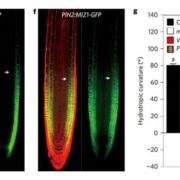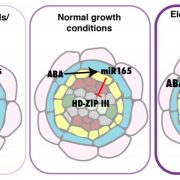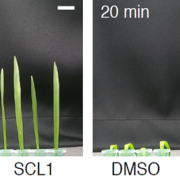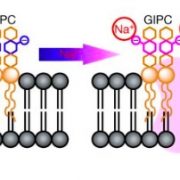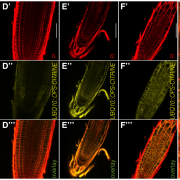Phototropin perceives temperature based on the lifetime of its photoactivated state
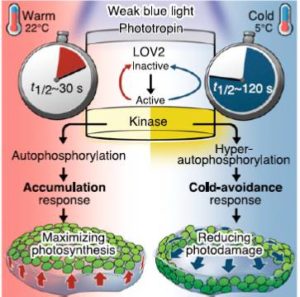 Although plants clearly perceive and respond to changes in temperature, it has not always been clear how they perceive temperature and its changes. Evidence for temperature sensing through membrane fluidity, protein stability and, more recently, the reversion of phytochrome to its inactive form has been shown. Fujii et al. investigated the basis for the temperature-sensitive positioning of chloroplasts; in low light at 22°C, chloroplasts align on the light-facing surface of a cell, whereas at 5°C they line up along the wall parallel to the incident light (to cut down on light interception). The authors showed that the blue-light receptor phototropin is responsible to this temperature-sensitive response, providing another example of temperature-sensing by a photoreceptor. Proc. Natl. Acad. Sci. USA 10.1073/pnas.1704462114
Although plants clearly perceive and respond to changes in temperature, it has not always been clear how they perceive temperature and its changes. Evidence for temperature sensing through membrane fluidity, protein stability and, more recently, the reversion of phytochrome to its inactive form has been shown. Fujii et al. investigated the basis for the temperature-sensitive positioning of chloroplasts; in low light at 22°C, chloroplasts align on the light-facing surface of a cell, whereas at 5°C they line up along the wall parallel to the incident light (to cut down on light interception). The authors showed that the blue-light receptor phototropin is responsible to this temperature-sensitive response, providing another example of temperature-sensing by a photoreceptor. Proc. Natl. Acad. Sci. USA 10.1073/pnas.1704462114


